Gaining Clarity on Transparency
I guess letting consumers call the shots isn’t always such a bad thing.
As a trend, consumers demanding more explicit information about when, where and how products are made wasn’t exactly met with open arms by the industry – especially since that demand has sometimes required companies to change longstanding business practices related to product sourcing, development, manufacturing and distribution.
Resistance to change is natural, of course. In this case, the more that consumers ask for products to be natural, the more change becomes necessary.
But resistance is futile, as they say. And in this case, it would be shortsighted as well. Based on the general mood at Path to Purchase Institute’s first TransparencyIQ conference, held in Chicago in October, initial resistance has been replaced by pragmatism and maybe even a little optimism. It turns out, you see, that becoming fully transparent about your products makes sound business sense, and not just because it satisfies a growing consumer demand.
Transparency can help a company achieve corporate goals focused on sustainability and fair trade; it can improve sourcing, product safety and other supply chain practices; it can provide a competitive advantage (at least for now) for brands and retailers; and yes, it can drive incremental sales and even consumer loyalty at a time when both seem to be waning for traditional brands.
All of those topics, and at least a few more, were covered during the event. As Label Insight chief marketing officer Patrick Moorhead put it, “Transparency is not a one-note song” related solely to fully divulging product ingredients to consumers.
Here are some of the points – data and otherwise – that struck a chord with me over the course of the day:
Only 12% of consumers view brands as the most trusted source of information about their own products – although 67% think they should be, according to Label Insight data. That’s an alarming disparity: Brands rank highest in consumer expectation but dead last in trust, as Moorhead put it.
Despite the industry’s best efforts, incomplete and incorrect information is still widespread online. And that can make a product “defective” after purchase when it doesn’t meet consumer’s pre-purchase expectations, according to Mike Wehrs, global head of data and products for GS1.
Unilever is going well beyond what might be required at the moment by getting more explicit with ingredient listings than regulations demand, helping to promote the industry-wide SmartLabel initiative, and even trying to get product information into the hands of consumers who don’t have internet access, said Tom Langan, the company’s North American director of external affairs.
Hershey’s involvement in SmartLabel has improved its own internal data governance, said Deborah Arcoleo, director of product transparency. (Langan credited Hershey with hatching the SmartLabel effort, which has 90 associations and companies working together to drive greater, standardized transparency.) “Your ability to be transparent is only as good as your data architecture,” which involves building a content database in conjunction with the data management and IS teams, said Arcoleo. It also means adapting internal content that “was never intended to be consumer-facing,” she noted. “You can’t share what you don’t store and maintain.”
Walmart is conducting research to determine what information consumers want, but also when they want it and how badly they need it – in other words, what information is simply “good to have” and what info impacts purchase decisions, according to Fred Bedore, senior director of sustainability. (For instance, a product’s “locally grown” status is something shoppers want to know in the store.)
But improving transparency throughout the supply chain has multiple business benefits, he explained. Implementing blockchain technology (which makes it impossible for existing data to be altered as it moves from one source to another) has reduced the time it takes to trace a bad batch of produce from seven days to just two seconds. That means retailers will no longer have to pull every unit in the supply chain in the name of safety – and affected consumers can be informed much faster without causing alarm among the rest of the populace.
Raley’s hopes to use transparency to “change the way the world eats, one plate at a time,” chief executive officer Michael Teel said. The new Raley’s Shelf Guide sets stricter standards for products via three proprietary classifications: Nutrient Dense, Minimally Processed and No Sugar Added (including substitutes). Raley’s wants to work with manufacturers to help them develop more products that will meet these standards. But at some point, the retailer will be open to sharing the classifications with other retailers as well.
This transparency bug must be contagious.



